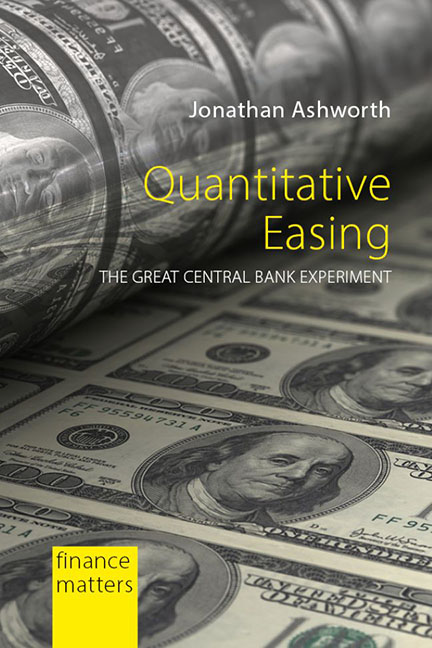Book contents
- Frontmatter
- Contents
- Preface and acknowledgements
- Abbreviations
- Foreword
- 1 Monetary policy-making since the end of Bretton Woods
- 2 Key monetary policy trends and events in the decades before the Great Financial Crisis
- 3 The Great Financial Crisis and the onset of quantitative easing
- 4 How quantitative easing works
- 5 Measuring the effectiveness and impact of quantitative easing
- 6 International spillovers of quantitative easing
- 7 Criticisms and negative externalities of quantitative easing
- 8 Exiting quantitative easing and policies for the next slowdown
- Conclusion
- Notes
- References
- Index
1 - Monetary policy-making since the end of Bretton Woods
Published online by Cambridge University Press: 20 December 2023
- Frontmatter
- Contents
- Preface and acknowledgements
- Abbreviations
- Foreword
- 1 Monetary policy-making since the end of Bretton Woods
- 2 Key monetary policy trends and events in the decades before the Great Financial Crisis
- 3 The Great Financial Crisis and the onset of quantitative easing
- 4 How quantitative easing works
- 5 Measuring the effectiveness and impact of quantitative easing
- 6 International spillovers of quantitative easing
- 7 Criticisms and negative externalities of quantitative easing
- 8 Exiting quantitative easing and policies for the next slowdown
- Conclusion
- Notes
- References
- Index
Summary
The Bretton Woods system of quasi-fixed exchange rates that had been in place for much of the period since the end of the Second World War finally came to an end in early 1973. Under Bretton Woods, the value of the US dollar (USD) had been fixed against gold while other currencies such as the British Pound (GBP), German Deutschmark (DM), etc. were pegged against the USD, with only periodic adjustments permitted in order to help countries correct deficits in their balance of payments. Its demise led to the major industrialized countries allowing their currencies to float freely on global financial markets. The move from fixed to flexible exchange rates allowed national policy-makers to shift from having to use economic policy to help maintain the economy's external balance (the balance of payments and the exchange rate peg), to a primary focus on using it to better achieve the economy's internal balance (stimulating/dampening aggregate demand, achieving full employment, etc.).
The main tool used by policy-makers to manage aggregate demand and control inflation since the end of Bretton Woods has been monetary policy, particularly official short-term interest rates. This primarily reflects the fact that changes in interest rates are much easier to enact and typically impact the economy much faster than fiscal policy. Indeed, for obvious electoral reasons politicians are typically averse to raising taxes or cutting government spending to slow growth, while to avoid wasteful spending or what are commonly referred to as “white elephant” projects, it can often take considerable time to plan and start new infrastructure projects when activity needs stimulating. Tax cuts have remained a favourite recession fighting tool in the US, although a number of economists have questioned their effectiveness, suggesting that they are more likely to be saved (Rivlin 2015).4 Meanwhile, countries where the power to enact fiscal stimulus does not lie solely with the executive branch of government, such as the US, may suffer resistance to and/or delays in passing timely legislation.
- Type
- Chapter
- Information
- Quantitative EasingThe Great Central Bank Experiment, pp. 1 - 16Publisher: Agenda PublishingPrint publication year: 2020



